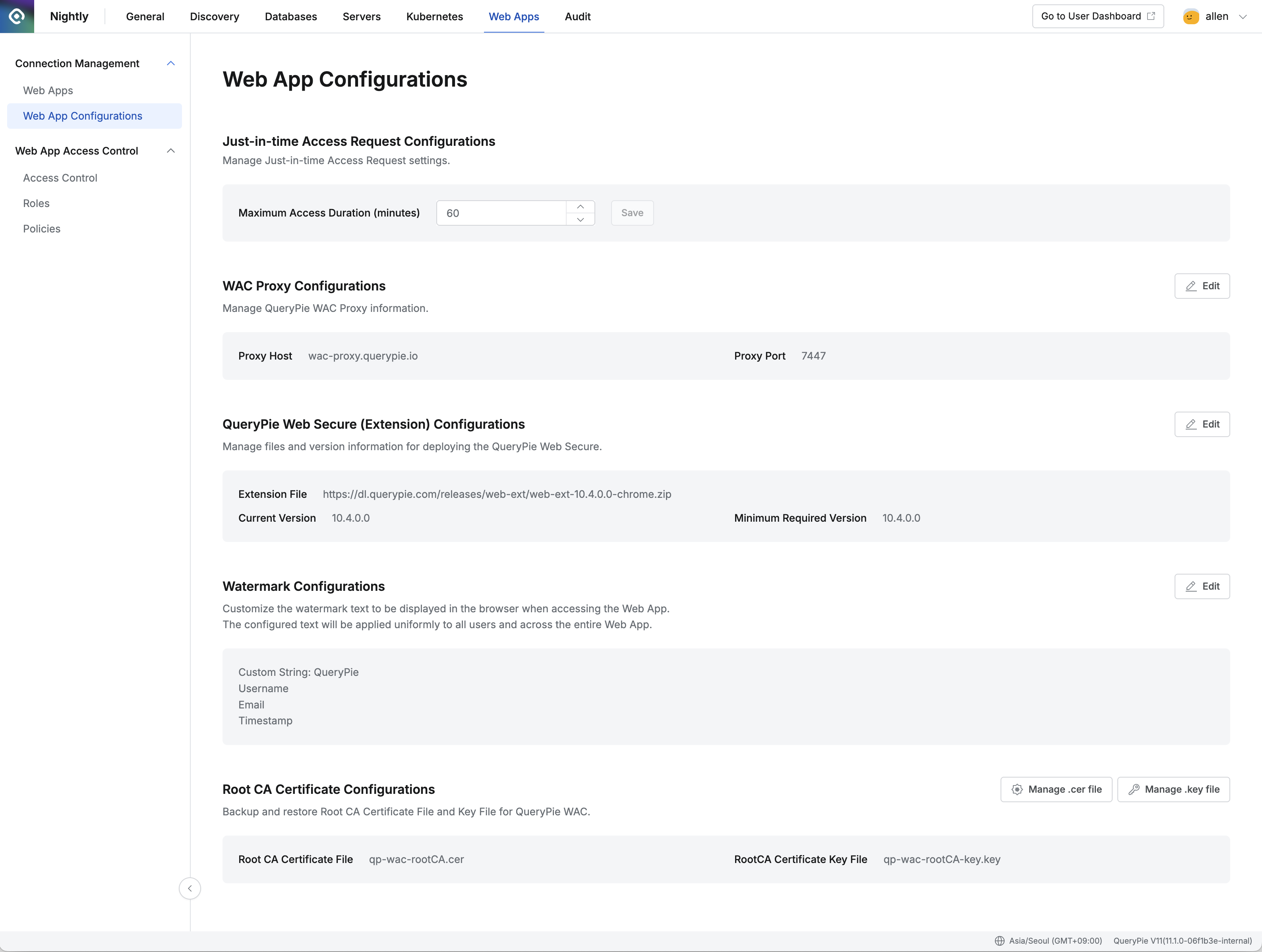Web App Configurations
Overview
The Web App Configurations page in QueryPie WAC allows you to manage security and access control settings for web applications. You can configure key security elements such as login failure thresholds, session timeouts, and unsafe protocol controls. This enables administrators to tailor the web environment to meet organizational security requirements and protect systems from potential threats.

Administrator > Web Apps > Connection Management > Web App Configurations
Just-in-time Access Request Configurations : Manage settings for temporary access requests.
Maximum Access Duration (minutes): Set the maximum allowed duration for a just-in-time access request (in minutes). The default is 60 minutes.
WAC Proxy Configurations : Manage QueryPie WAC proxy server details.
Proxy Host: Displays the host address of the WAC proxy server.
Proxy Port: Displays the port number of the WAC proxy server.
QueryPie Web Secure (Extension) Configurations : Manage deployment details for the QueryPie Web Secure Chrome extension.
Extension File: Shows the download URL for the Chrome extension file.
Current Version: Displays the currently installed extension version.
Minimum Required Version: Displays the minimum required version for the extension.
Watermark Configurations : Customize watermark text to display in users’ browsers when accessing web applications. The configured watermark is applied uniformly across all users and web apps. Available watermark options include:
Custom String: User-defined text
Username: User ID
Display Name: User’s display name
Email: User’s email address
Employee Number: Employee ID
Organization: Organization name
Division: Division name
Department: Department name
Timestamp: Access time
Client IP: Client IP address
Root CA Certificate Configurations : Back up and restore the Root CA certificate and key files used for QueryPie WAC. Administrators can manage these files using the Manage .cer file and Manage .key file buttons.
Root CA Certificate File: Displays the file name of the Root CA certificate.
RootCA Certificate Key File: Displays the file name of the Root CA certificate key.
%201.png)